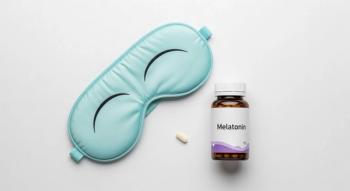
Pharmacological Treatment Options for Narcolepsy
In this custom video series, experts discuss the advantages and disadvantages of stimulating agents in the treatment of narcolepsy in addition to other notable pharmacological options.
Episodes in this series

Debra Stultz, MD: Let’s talk about some medicines that we’ve used for narcolepsy. Do you want to start with modafinil and armodafinil?
Stephen Stahl, MD, PhD: Those are agents that would probably be best characterized as dopamine reuptake blockers. They’re mild stimulants. They’re weak stimulants in the sense that they probably don’t rapidly block the transporter and don’t completely block the transporter. Almost all the medicines are dedicated to boosting arousal. If you don’t have orexins to boost arousal, you have to have medicines to boost arousal. You remember the old reticular activating system—dopamine, norepinephrine, not so much serotonin, but histamine, acetylcholine. These are the more arousal neurotransmitters.
It turns out that you can be in trouble if you block any of the arousal neurotransmitters. That puts you to sleep. That’s the last thing you want to do. In treating people with modafinil, 1 of the first things you want to do is to say, “Am I blocking dopamine or any of these other neurotransmitters,” and stop those drugs if you can. But modafinil and its active enantiomer or armodafinil boost dopamine, but not norepinephrine transporters; it doesn’t look like it. In so doing, they have a mild stimulant effect and boost the arousal neurotransmitter dopamine. By doing that, they wake you up.
Debra Stultz, MD: Yes. These medications, I believe, have helped change the medicines when they came out—a new way to treat the success of daytime sleepiness. They do not have the same significant adverse effects on heart rate, blood pressure, and abuse potential that the stimulants have. One of the only things we had for several years for that was stimulants. They’ve been very beneficial medicines.
Stephen Stahl, MD, PhD: The stimulants work sometimes too well because they work rapidly. They go up too high a dose; they overstimulate. It’s hard to adjust the dose. They often must be taken more than once a day, although there are some new ones that don’t. It’s hard to get a dose-response curve with stimulants that have the right amount of efficacy without the adverse effects. They tend to happen, but it’s much easier to do that with modafinil and armodafinil because they don’t have the overstimulating effects, and they don’t have the rapid onset and the big peaks. Sometimes you have to give them twice a day, sometimes just once a day. Because stimulants, unless you give the controlled release, must all be given more than once a day.
Debra Stultz, MD: Stimulants certainly have their place, and they add on, but they have more of an abuse potential and more cardiac effects. It’s interesting how you must dose them. Sometimes we have to add a sprinkle of it to some other medicines.
Let’s talk for just a minute about sodium oxybate. That medicine changed the face of narcolepsy for sure.
Stephen Stahl, MD, PhD: It’s got a checkered history, but boy does it work to make narcolepsy better. It’s probably the most powerful drug to make you have slow-wave sleep.
Debra Stultz, MD: That’s a really good point. It helps with the disrupted nocturnal sleep. It’s FDA approved for excessive daytime sleepiness and cataplexy. There have also been some studies on it helping the sleep paralysis and hypnagogic hallucinations.
Stephen Stahl, MD, PhD: The main problem is that it causes you to have to take it twice. It’s so short acting that it’s a pain to take sometimes. It’s a liquid. It’s also highly controlled. The access problems can be somewhat problematic or a hassle, but the good news is that it works so well that people are coming up with once-a-day formulations.
Debra Stultz, MD: Patients get used to it after a while. Now they have the new form with less sodium.
Stephen Stahl, MD, PhD: It’s a heck of a sodium load, isn’t it?
Debra Stultz, MD: Yes.
Stephen Stahl, MD, PhD: For people who have sodium, it can be a problem.
Debra Stultz, MD: But the new formulation has 92% less sodium and the same effectiveness, and it’s also been approved for sleepiness and cataplexy
Stephen Stahl, MD, PhD: But most of what you want to do is make sure you’re stopping the medicines that cause the activation to be blocked, and you want to start medications that boost activating neurotransmitters.
Debra Stultz, MD: Right. We did leave 1, solriamfetol. We may talk about that, Sunosi. That’s interesting. I’m sure you will think from a neurotransmitter.
Stephen Stahl, MD, PhD: It’s like bupropion, isn’t it?
Debra Stultz, MD: Yes.
Stephen Stahl, MD, PhD: It’s like a stimulant in a certain sense because stimulants are norepinephrine and dopamine reuptake inhibitors. Remember, I told you that bupropion is a norepinephrine reuptake inhibitor. Modafinil is a dopamine reuptake inhibitor. All these are good for different things on a theme, different variations of a theme. What’s interesting is that there are some good things that stimulants do without having the overstimulation.
Debra Stultz, MD: Right. One of the advantages of this medicine is it doesn’t have an effect on birth control pills, so that’s important for some young women. There can be effects on the birth control pill, like Provigil, or modafinil. One advantage of this medicine is it doesn’t have the effect on the birth control pill.
Stephen Stahl, MD, PhD: Good point.
Debra Stultz, MD: Yes. That makes it attractive. It’s also been approved for the excessive daytime sleepiness of sleep apnea, as well as for the excessive daytime sleepiness of narcolepsy but not cataplexy. I haven’t seen any studies on its effect with the sleep paralysis or hypnagogic hallucinations.
Transcript edited for clarity.
Disclosures:
Dr Stephen Stahl is clinical professor of psychiatry and neuroscience at the University of California Riverside, adjunct professor of psychiatry at the University of California San Diego, and honorary fellow in psychiatry at the University of Cambridge. Over the past 12 months (January 2020 - December 2020), Dr Stahl has served as a consultant to Acadia, Alkermes, Allergan, AbbVie, Arbor Pharmaceuticals, Axovant, Axsome, Celgene, Concert, Clearview, EMD Serono, Eisai Pharmaceuticals, Ferring , Impel NeuroPharma, Intra-Cellular Therapies, Ironshore Pharmaceuticals, Janssen, Karuna, Lilly, Lundbeck, Merck, Otsuka, Pfizer, Relmada, Sage Therapeutics, Servier, Shire, Sunovion, Takeda, Taliaz, Teva, Tonix, Tris Pharma, and Viforpharma; he is a board member of Genomind; he has served on speakers bureaus for Acadia, Lundbeck, Otsuka, Perrigo, Servier, Sunovion, Takeda, Teva, and Vertex; and he has received research and/or grant support from Acadia, Avanir, Braeburn Pharmaceuticals, Eli Lilly, Intra-Cellular Therapies, Ironshore, ISSWSH, Neurocrine, Otsuka, Shire, Sunovion, and TMS NeuroHealth Centers.
Dr Debra Stultz is the Director and Owner of Stultz Sleep and Behavioral Health in Barboursville, West Virginia. Dr Stultz earned her medical degree from Marshall University School of Medicine in Huntington, West Virginia. She completed a residency in psychiatry and a fellowship in child and adolescent psychiatry through West Virginia University at their Charleston Division through Charleston Area Medical Center in Charleston, West Virginia. She is board certified in psychiatry, sleep medicine, and behavioral sleep medicine. With a special interest in Narcolepsy, she treats a variety of sleep disorders and psychiatric issues. She is also the editor for the Clinical TMS Society newsletter, on their Board of Directors, and the chairman of the TMS and Sleep Disorders Affinity Group. Dr Stultz is on the advisory committee for Harmony Biosciences and is a speaker for Harmony Biosciences and Jazz Pharmaceuticals.
Newsletter
Receive trusted psychiatric news, expert analysis, and clinical insights — subscribe today to support your practice and your patients.




















